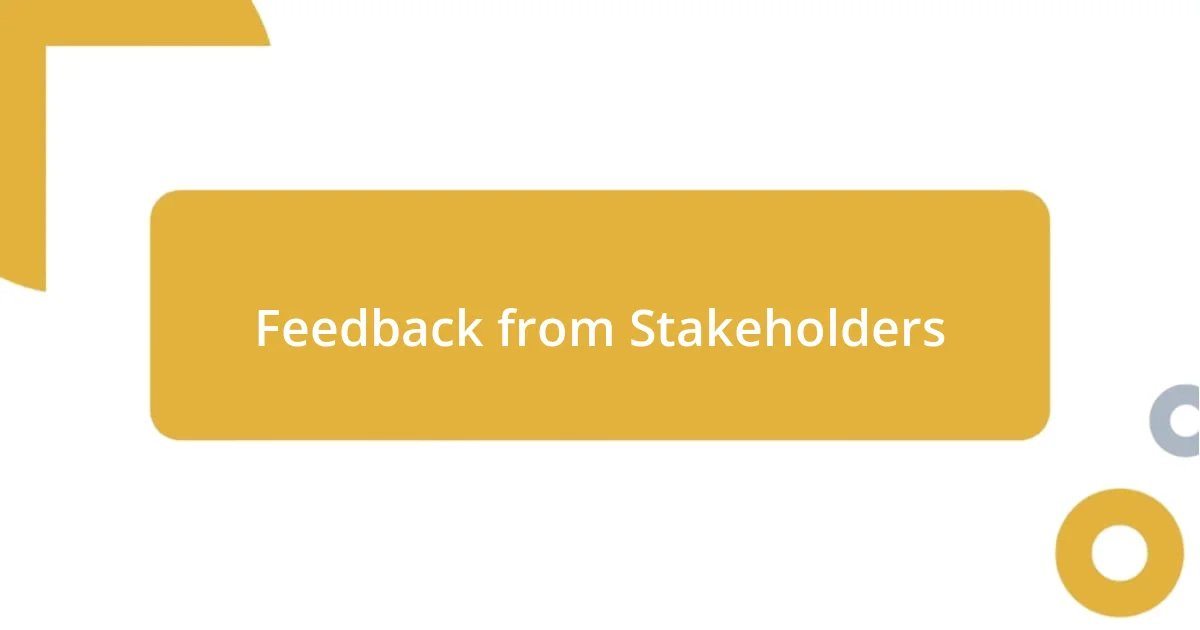Key takeaways:
- The previous learning management system was complex and lacked user support, prompting the decision to switch for a more intuitive and responsive platform.
- Key features for an effective LMS include a user-friendly interface, robust analytics, integration capabilities, mobile accessibility, and customizability.
- Gathering feedback from stakeholders highlighted the need for a system that enhances engagement, supports collaboration, and simplifies processes for both students and educators.

Reasons for Switching Systems
One major reason I decided to switch my learning management system was the overwhelming complexity of the previous platform. I remember feeling frustrated every time I tried to set up a course—it was like navigating a maze without a map. Have you ever felt that same confusion when simply trying to upload a lesson?
Another factor was the lack of intuitive features in the old system. I often found myself spending hours searching for tools that should’ve been at my fingertips. It’s maddening when technology doesn’t make your life easier, right? When I made the switch, I instantly felt a weight lifted off my shoulders as I discovered a more user-friendly interface that actually supported my teaching goals.
Additionally, the previous system fell short in terms of customer support. There were moments I desperately needed answers, but the response times were painfully slow. I can vividly recall waiting for days only to receive generic replies that barely addressed my concerns. Isn’t it crucial for an educational platform to prioritize support, especially when you’re relying on it to connect with your learners? This realization pushed me to find a service that truly valued its users and provided timely assistance.

Key Features to Consider
When I was exploring new learning management systems, I quickly realized how vital it is to assess key features tailored to my needs. A system’s functionality can truly enhance or hinder the learning experience, and it’s essential to find one with tools that effectively support both teaching and learning. I remember the relief I felt when I discovered systems that offered integrated tools like video conferencing and assessment options—all in one place.
Here are some key features to consider:
- User-Friendly Interface: A clean, simple layout can make a world of difference. No more hunting for buttons!
- Robust Reporting and Analytics: Understanding learner progress is crucial. Detailed insights allow me to tailor lessons effectively.
- Integration Capabilities: Ensure your LMS can connect with other tools you already use, like Google Drive or Zoom.
- Mobile Accessibility: In today’s world, learners often need access on-the-go. I appreciate when students can learn from anywhere.
- Customizability: It’s wonderful to have the option to brand the LMS to fit my institution or personal style.
These features aren’t just convenient—they’re essential in fostering a productive and engaging learning environment that resonates with my students.

Evaluating User Experience
Evaluating user experience is not just about aesthetics; it’s about how a platform makes you feel throughout your educational journey. I remember the first time I logged into a new LMS and was immediately struck by its sleek design and logical layout. It felt refreshing, like stepping into a well-organized library after being stuck in a cluttered room. The ease with which I could navigate the interface turned what used to be a chore into an enjoyable exploration.
I find that an effective LMS should also consider the students’ experience, not just the instructors’. When my students reported enjoying their learning environment, I felt a sense of pride, knowing that I had chosen an LMS that fostered interaction and ease. I anxiously awaited their feedback after switching. The way they praised the simple dashboard made me realize that even small adjustments can lead to a significant impact on engagement.
Finally, the importance of responsive design cannot be overstated. I learned this the hard way when students struggled to access content on their phones. Now, with a responsive LMS, I receive thanks from students who appreciate learning opportunities whenever and wherever they want. That ease of access has transformed homework into a more flexible part of their lives, eliminating previous frustration.
| Aspect | Previous LMS | New LMS |
|---|---|---|
| User Interface | Complex and cluttered | Clean and intuitive |
| Student Feedback | Confusing navigation | Positive & engaging |
| Responsive Design | Poor mobile experience | Seamless access on all devices |

Integration with Other Tools
Integration with various tools was a game-changer for me when I decided to switch my learning management system. I vividly recall grappling with clunky software that forced me to toggle between multiple platforms—talk about frustrating! Finding a new LMS that seamlessly connected with tools I already relied on, like Google Drive for document storage and Zoom for meetings, instantly made my work more efficient. It felt like fitting the last piece into a jigsaw puzzle, bringing everything together harmoniously.
One of my biggest frustrations in the past was the endless time wasted on manually transferring data between systems. Now, I appreciate how my new LMS automates these processes. For example, when I schedule a class in my LMS, it automatically syncs with my calendar, reminding me of upcoming sessions. This integration not only lightens my workload but also ensures I never miss important milestones—something I once took for granted. Doesn’t it feel great when technology actually works for you rather than against you?
I also learned the value of having plug-and-play capabilities with third-party tools, which opened up a world of possibilities for enhancing learning. Whether it’s integrating assessment tools or content libraries, I’ve seen firsthand how these connections can enrich the learning experience. Once, I effortlessly incorporated interactive quizzes into my lessons, which immediately boosted student engagement. It truly transformed the way they interacted with the material. The freedom that comes from an LMS that integrates well with other tools is not just about convenience; it’s about elevating the entire educational journey.

Cost Analysis of New System
When I dove into the cost analysis of my new learning management system, I was surprised by how much I could save in the long run. Initially, the new LMS seemed pricier, but then I realized that its robust features, like automated reporting and analytics, would drastically reduce the hours I spent on administrative tasks. Have you ever calculated the value of your time? I found that out by simply assessing how many hours I used to dedicate to manual inputs. By transitioning to a system that worked smarter for me, I knew I could reclaim countless hours for what truly matters—teaching.
Moreover, I discovered the hidden costs associated with my previous LMS, like frequent technical support calls and training sessions for new users. These expenses piled up faster than I anticipated. Just last year, I spent a small fortune on onboarding for staff and troubleshooting issues. Thankfully, the new LMS came with extensive training resources and a responsive support team, reducing my dependency on costly external help. This made me realize that sometimes, investing a little more upfront can lead to significant savings later on.
Finally, I had to consider the overall impact on student outcomes, which, though harder to quantify in pure dollar terms, is invaluable. I remember witnessing a notable rise in student participation and satisfaction since the switch. Isn’t that what education reform is all about? When students thrive, it reflects positively on the entire institution. So, while the initial price tag of the new LMS made me pause, I knew investing in a system that enhances learning experiences would ultimately pay dividends in both efficacy and engagement.

Feedback from Stakeholders
Gathering feedback from stakeholders was a crucial step in my decision to switch learning management systems. I remember hosting a meeting where I asked teachers, administrators, and students about their experiences. Their responses ranged from frustration with outdated features to excitement about potential improvements. Listening to their concerns made me realize how pivotal their input would be in choosing a platform that truly addressed our needs. Have you ever noticed how empowering it feels to be heard? I felt that way as they voiced their opinions, fueling my conviction to prioritize their perspectives in this transition.
The enthusiasm from students was particularly telling. One student mentioned how difficult it was to navigate the previous LMS; their struggle resonated with me. Listening to them made me think: if they’re disengaged, how effective can we really be? This echoed in the conversations I had with educators, who expressed a desire for tools that fostered collaboration. They craved an interface that didn’t just serve as a repository, but as a vibrant space for interaction. Their feedback helped me solidify my choice, knowing that our new system would enhance both teaching and learning dynamics.
On the administrative side, the consensus was clear: ease of use and powerful analytics were non-negotiables. I recall a conversation with a tech-savvy colleague who shared horror stories about time wasted pulling reports. Their passion for innovation opened my eyes to the importance of a system that could simplify processes. And you know what? It made me feel justified in my choice, knowing that I sought a platform that could alleviate the burdens they faced. That connection with my stakeholders became the north star of our quest for a new LMS.

Lessons Learned from Transition
Transitioning to a new learning management system was a journey filled with unexpected insights. One of my biggest lessons was the importance of communication throughout the process. I remember sending out a survey to gather insights from my colleagues, and the responses painted a vivid picture of their struggles. Some felt overwhelmed with the old system, while others were excited about potential improvements. This reinforced for me the idea that keeping an open dialogue helps everyone feel invested in the change and eases the transition.
Another takeaway was appreciating the value of a user-friendly interface. During the first week of using the new LMS, I noticed how effortlessly my students adapted to the changes. There was this one instance where a group of students, previously reluctant to engage online, had lively discussions in the forum. Their enthusiasm made me realize how essential it is to provide tools that foster natural engagement. Isn’t it amazing how the right platform can unlock a desire for learning?
Lastly, I learned the significance of patience during the rollout phase. Initially, I expected everything to go perfectly, but there were bumps in the road, like minor glitches and user confusion. I recall feeling frustrated when some features didn’t work as expected, but I quickly recognized that every transition comes with a learning curve. Embracing those moments allowed me to adapt and find solutions, enhancing not just my own experience but also that of my colleagues and students. Have you ever experienced a hiccup in a transition that ultimately led to greater understanding? I certainly have, and it transformed how I approach change moving forward.













